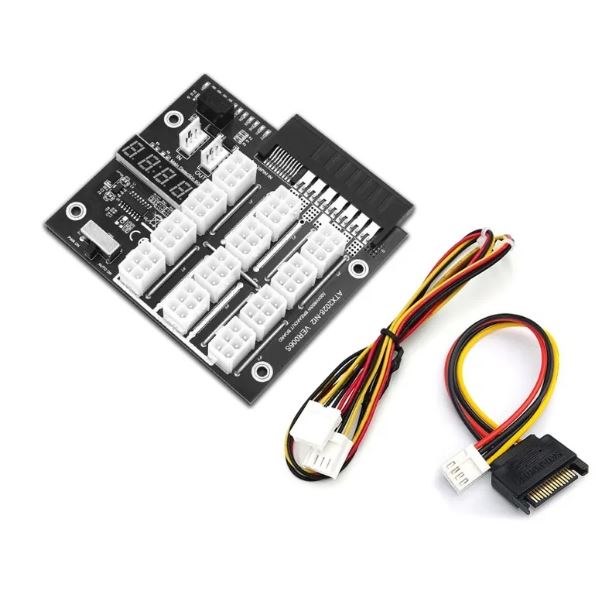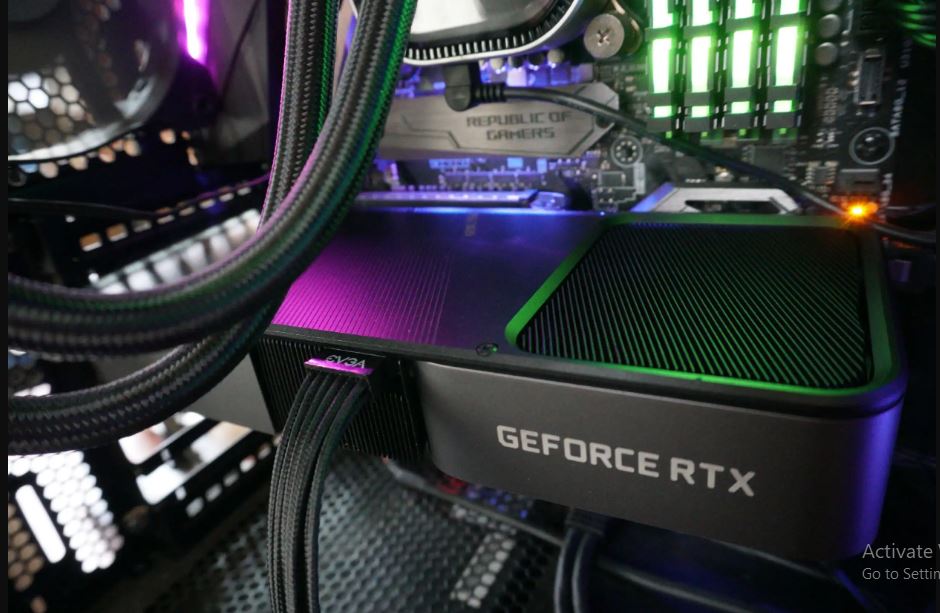The video card is one of your PC’s most powerful hardware components. It processes your graphical data and ensures that your display is of high quality. Without a video card, you cannot run some applications and games. Some video cards are so powerful that your PC’s power supply may not be enough for them. When this happens, we get the question, Can I use separate power supply for video card?
Yes, you can use a separate power supply for a video card. This is actually a popular practice among gamers and graphically intensive users. The separate power supply gives the card a more sufficient power supply, especially when using multiple graphics cards.
The tantalizing idea that you can push the boundaries of what your rig can achieve is very exciting. However, while trying to maximize your video card’s potential, you have to know the intricacies involved. So, this article will explain if you can use a separate power supply for your video card. Let’s dive in.

Can I Use Power Supply For Video Card
You can use a separate power supply for your video card, especially if you are using a high-end graphics card. These high-end graphics cards require more power than their existing power supply can offer.
An underpowered video card runs the risk of getting burned out. There is also a risk to your PSU when your graphics card requires more power than it can supply. It starts getting overworked. In this case, using a separate power supply for the video card is perfectly okay.
While using a separate power supply for your graphics card, you have to note many things, and we will explain them next. Although you can use a separate power supply, the perfect thing to do would be to upgrade your PSU to a higher one so that it can provide sufficient power to the video card.
Things To Consider While Using A Separate Power Supply For Video Card
Using a separate power supply for your video card can give you the additional power your GPU requires for high performance. But it is also a very advanced setup that requires very careful planning and execution, and there are a lot of things you have to consider first.
Here are some things to consider before using a separate power supply for your video card:
- Ensure that the new or secondary power supply you want to introduce is compatible with your video card. The connectors should be compatible and provide enough wattage to meet your GPU’s power needs.
- You have to be sure that you can sync the two power supplies or set them in sequence to prevent voltage imbalance. A voltage imbalance can damage your PC and the video card. You can use a power supply adapter to sync both power supplies.
- Ensure that you can properly manage and route the power cables from the two power supplies to your video card. You must have a clean cable organization to avoid accidental disconnects or interference.
- You must consider how to distribute the load between the primary and secondary power supplies. These two supplies have to go in different compartments to avoid overload.
- Make sure that you can exercise safer precautions to avoid electrocution. Mishandling the power supply can damage your PC and even cause death. Maintain good safety precautions.
- Before using a separate power supply, ensure your PC case has enough space to comfortably accommodate both. You need to have enough ventilation to prevent overheating.
- Ensure that the new power supply is compatible with your motherboard. This is very important because if not, you may not be able to use the video card. You can check your motherboard manual for specs and compatibility.
Does Video Card Need Its Own Power Supply
Video cards do not typically need their own power supply. It receives its power from the computer’s main power supply unit. This is the standard configuration for most PCs and desktop systems.
The video card connects to the PC’s main PSU through the PCI Express power connectors. These connectors are usually 6-pin or 8-pin connectors. The connectors supply the necessary power to the GPU for its operation.
The main PSU is responsible for providing power to all the components in your computer: the motherboard, CPU, RAM, storage device, and, of course, the GPU. The distribution depends on the power requirements of these components.
This supply structure is why ensuring that your computer’s PSU is compatible with your video card is important. You have to be sure it can supply the energy required to work. Sufficient power improves the card’s performance.
If you are a gamer or have a need for a higher-powered video card than your main PSU can provide, Then you can opt to use a separate power supply for your video card. While a dedicated power supply is not necessary, it can be crucial to supporting your entire system. You can also consider upgrading your PSU to one with a higher wattage rather than adding a separate power supply just for the video card.
Read: video card power supply
Disadvantage Of Using Separate Power Supply For Video Card
Using a separate power supply for a video card can be a suitable solution to your power deficiency, but it also comes with a lot of challenges and drawbacks. Here are some of the disadvantages of using a separate power supply for video cards:
- Using two power supplies in a system can be complex, especially for users who are not experienced with computer hardware. You will have to ensure that both PSUs turn on and off simultaneously. Managing multiple sets of power cables can also be challenging.
- If the two power supplies are not synchronized correctly, it can lead to startup and shutdown problems, voltage imbalances, or even system instability. You may need special adapters or jumpers to synchronize the power supplies.
- Adding a second power supply can take up valuable space inside your computer case, making cable management more challenging. It can lead to increased clutter and reduced airflow, potentially impacting cooling efficiency.
- Purchasing an additional power supply is an extra cost. High-quality power supplies can be expensive, and investing in a second one may not always be the most cost-effective solution.
- Using multiple power supplies may void warranties on certain components, such as your motherboard or GPU. It’s essential to check your components’ warranty terms and conditions before implementing a separate power supply setup.
- Some motherboards may not support multiple power supplies, and this can lead to compatibility issues. Additionally, the constant cycling of two power supplies during startup and shutdown can put stress on electrical components.
- Configuration errors, such as incorrect cable connections or failure to synchronize the power supplies, can result in system damage or instability. You will have to exercise caution and follow instructions carefully.
- Any Plans for future upgrades become more complex when using multiple power supplies. You’ll need to make sure that your current setup can accommodate any new components.
While using a separate power supply for a video card can provide the extra power needed for high performance, it introduces complexity, cost, and potential challenges.
Before opting for this solution, you have to carefully evaluate whether it’s the best approach for you carefully. Consider other alternatives, such as upgrading to a more powerful single PSU.

Frequently Asked Questions
Can I Use Two Different Brands Of Power Supplies For This Setup?
Yes, you can use two different brands, but it’s best to use power supplies with similar specifications and quality levels to minimize compatibility issues.
Do I Need To Synchronize The Startup Of Both Power Supplies?
Yes, synchronization is crucial to ensure both power supplies turn on and off simultaneously. You can use a dual PSU adapter or manually jump the second PSU to achieve this.
What Happens If I Don’t Synchronize The Power Supplies Correctly?
Failure to synchronize properly can lead to voltage imbalances, startup and shutdown issues, and potential damage to your components.
Can I Use A Single, High-Wattage PSU Instead Of Two PSUs For My High-End Video Card?
Yes, using a single high-wattage PSU is a simpler and often more cost-effective solution for high-end GPUs, provided it can supply the required power.
Are There Any Safety Precautions I Should Be Aware Of When Using Two Power Supplies?
Yes, be cautious about electrical safety. Ensure both PSUs have safety features, connect the ground wires between them, and follow proper cable management practices to reduce the risk of electrical hazards.
Conclusion
In the world of computer hardware, pushing performance boundaries is not unheard of, and using a separate power supply for a video card is one such boundary. Using a separate power supply can give you the extra power your high-end GPU needs, but it can be very complex and challenging.
While we conclude our exploration of this amazing topic, we must tell you that it can be a game changer for professionals looking for peak performance. It is not necessary for day-to-day tasks. Instead of using a separate power supply for video card, consider upgrading your main PSU to a higher wattage.
